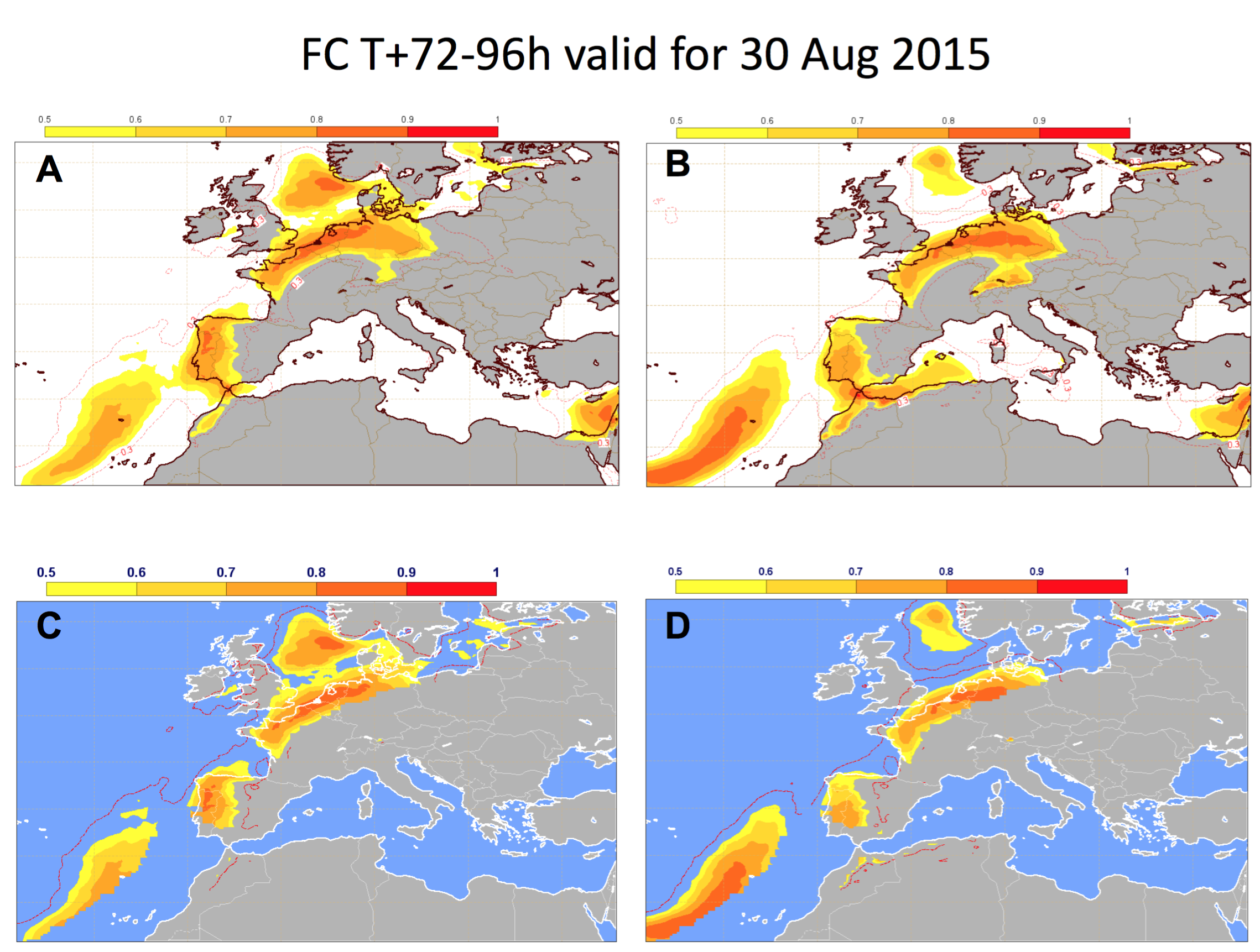
where deep-layer wind shear
 . CSP is targeted at forecasting organised DMC, such as supercell convection, as the deep-layer wind shear helps to organise convection into long-lived cells. CSP units are m2/s2 .
. CSP is targeted at forecasting organised DMC, such as supercell convection, as the deep-layer wind shear helps to organise convection into long-lived cells. CSP units are m2/s2 .Practical remarks
In summer 2015 ECMWF introduced, in test mode, two new EFI parameters for forecasting severe convection - for CAPE and for CAPE-shear - that are described below. The test period is now over, and accordingly the parameters are now included in the ECMWF real-time catalogue (see here) and are available in dissemination. In the catalogue the EFIs for CAPE and CAPE-shear have the short names of "CAPEI" and "CAPESI" respectively. Charts based on these parameters continue to be available on the ECMWF web-site (here).
Explanation of the new parameters
While a global NWP model cannot be expected to forecast individual convective cells, such a model can tell the user whether the broadscale environment is favourable for development of deep moist convection (DMC). Based on this premise, and following user requests and extensive testing, the new EFI parameters were added to assist with the forecasting of severe convection: the EFI for CAPE and the EFI for CAPE-shear (=CSP, for "CAPE-Shear Parameter").

 . CSP is targeted at forecasting organised DMC, such as supercell convection, as the deep-layer wind shear helps to organise convection into long-lived cells. CSP units are m2/s2 .
. CSP is targeted at forecasting organised DMC, such as supercell convection, as the deep-layer wind shear helps to organise convection into long-lived cells. CSP units are m2/s2 .More information about CAPE and CSP can be found in the ECMWF Newsletter No.144 here (starts on page 27).
Further details and practical information about the EFI for CAPE and CSP are also available in the help section below the EFI web charts, in the sub-section entitled "EFI for CAPE and CAPE-shear" here: real-time EFI-related products (select the CAPE or CAPE-shear chart, then page down to see/open this subsection).

Figure 1. EFI forecasts for A) CSP; B) CAPE; C) CSP where probability of precipitation above 1mm/24h is greater than 5%; D) CAPE where probability of precipitation above 1mm/24h is greater than 5%. The EFI signal disappears over a large part of Germany except the northern areas after filtering out EFI values where probability of precipitation above 1 mm/24h is less than 5%. Severe convection developed only over the northern parts of Germany, whilst over the rest of the country it stayed dry and sunny.